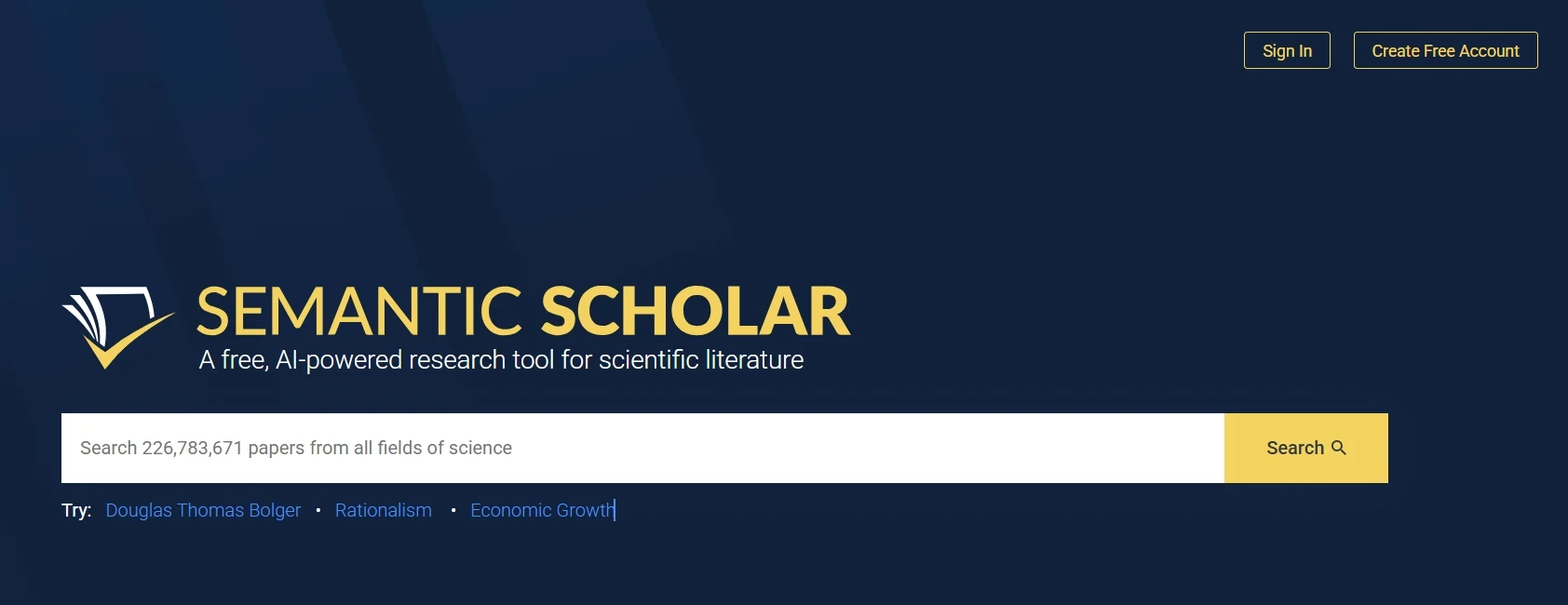
Semantic Scholar
Free, AI-powered research tool for discovering scientific literature. Search millions of peer-reviewed papers across disciplines with semantic relevance and citation context.
Founded: 2015
Organization: Allen Institute for AI (AI2)
Country: United States
Website: https://www.semanticscholar.org
Key Features
- Search over 220 million academic papers using semantic relevance
- AI-powered citation analysis and influential paper detection
- Semantic Reader (Beta): enhanced reading with contextual insights
- Topic filtering, authorship tracking, citation graphs
- Free and public REST API for developers
- Cross-discipline coverage: medicine, computer science, biology, and more
Screenshot Preview

AI Output Example
“Query: Large language models in medicine → Result: Semantic Scholar returns the most cited, contextually relevant medical AI papers with citation trails and author networks.”
Pricing
Free Access
Semantic Scholar is completely free to use — no login required for most features.
API Access
Developer API is free with generous limits for academic or research use.
Best For
Milestones & Recognition
- Over 220 million papers indexed
- Developed by the Allen Institute for AI (AI2)
- Includes augmented Semantic Reader beta experience
- Featured in Nature, Wired, Science, and AI research communities



